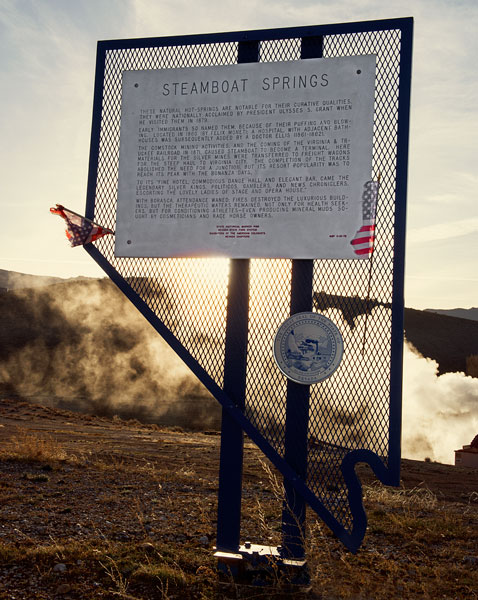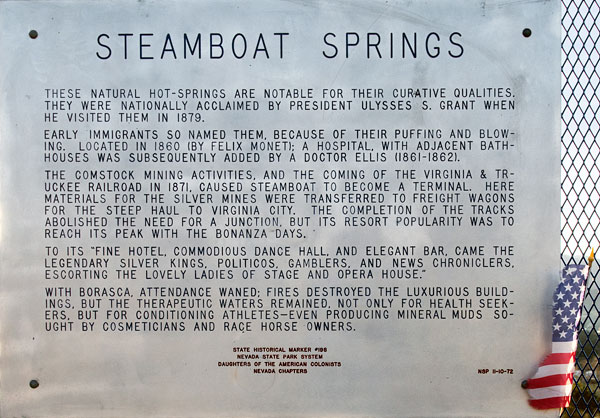Nevada Historic Markers in Washoe County: Steamboat Springs
Nevada Historical Marker 198
Steamboat Springs
US 395
Steamboat


17 March 2016
(Click Photos to Zoom)
These natural hot-springs are notable for their curative qualities. They were nationally acclaimed by President Ulysses S. Grant when he visited them in 1879.
Early emigrants so named them, because of their puffing and blowing. Located in 1860 (by Felix Monet); a hospital, with adjacent bathhouses, was subsequently added by a Doctor Ellis (1861-1862).
The Comstock mining activities and the coming of the Virginia and Truckee Railroad in 1871, caused Steamboat to became a terminal. Here materials for the silver mines were transferred to freight wagons for the steep haul to Virginia City. The completion of the tracks abolished the need for a junction, but its resort popularity was to reach its peak with the Bonanza Days.
To its "fine hotel, commodious dance-hall and elegant bar, came the legendary silver kings, politicos, gamblers and news chroniclers, escorting the lovely ladies of stage and opera house."
With borasca, attendance waned; fires destroyed the luxurious buildings, but the therapeutic waters remained, not only for health seekers, but for conditioning athletes - even producing mineral muds sought by cosmeticians and race horse owners.
State Historical Marker #198
Nevada State Park System
Daughters of the American Colonists
Nevada Chapter

The last paragraph of the citation includes the obscure word borasca. I am guessing that it is a variant of the Spanish word borrasca.
According to the The Coal And Metal Miners' Pocket-Book Of Principles, Rules, Formulæ, And Tables, borrasca was Mexican slang for a mine that has a vein but no ore or a mine that is played out.
Borrasca is the antithesis of bonanza.
Borrasca is also a Spanish word for a squall or a storm, but that usage seems unlikely here.